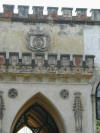Slovak notaries in the Upper Nitra

Since the 16th century, the notary was one of the committee officials, who originally provided only a written agenda. Later, he also performed administrative and tax agenda. Given that the notary's office required professional legal training and such a qualified person was difficult to find, it was customary for a notary to work often for several committees. Since the 16th century, when the notary became a permanent elected official, in addition to his salary, he also received personal bonuses for making documents. In the 18th century, auxiliary notaries (vicenotárius) were elected as conceptual officials.
In May 1605, Hajdúks Stephan Bocskay, under the command of Gregor Némethy, crossed the Danube near Bratislava and began to loot Transdanubia, Austria and Moravia.
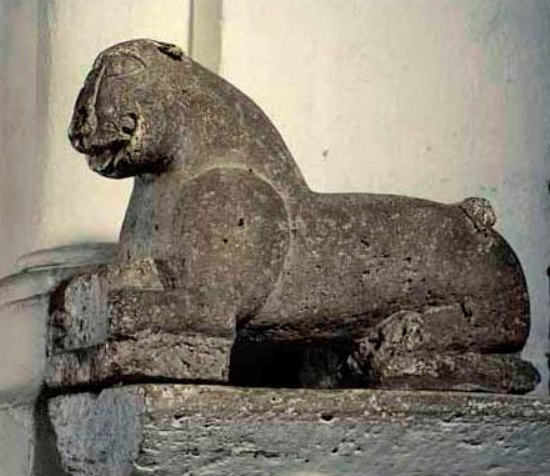
The lion that guards the Bible is in the coat of arms of the Ondrejkovics family. Originally a polychrome statue of a lion is in the cathedral church of St. Martin of the Spiš Bishopric in Spišská Kapitula. The tombstone of the provost ThDr. Andreas Ondrejkovics (*1621 Spišská Štiavnica, district Spišská Nová Ves †02/09/1697 Spišské Podhradie - Spišská Kapitula, came from an old yeoman family) prey was last placed in an unreasonable place next to the new memorial of the Holy Father Ján Pavol II. at the castle wall of the Chapter. The coat of arms of his name has a provost ThDr. A. Ondrejkovics also above the entrance to the canonical house no. 13 of the Spiš Chapter.
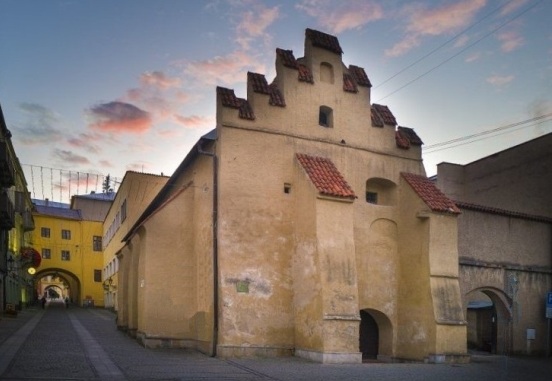
Desivý stredoveký tzv. Caraffov žalár v Prešove, kde kat mimoriadneho súdu cisárskeho generála Antónia Caraffu v beštiálnej vyšetrovacej tortúre umučil žeravým železom na smrť priameho predka autora vysokého hodnostára Zvolenskej stolice magnáta Juraja IV Radvaňského z Radvaňe a Sajókazy. Na Caraffov príkaz mu po smrti 18. apríla roku Pána 1687 kat odťal pravicu aj hlavu a mŕtve zmučené telo bolo neslýchane zversky zhanobené.
In the winter of 1710 in the village of Velke Rovne was hiding kurucz Tomáš Uhorčík after escaping captivity in the castle prison in Velka Bytca. He was helped to escape by the former kurucz, the imperial soldier Juraj Jánošík.
In 1753 Stephan Fraštacký was a teacher in Velké Bielice. In the year 1767 was teacher 35 ročný Ján Fraštacký.

Paulus Timotheus *24.01.1769 parents Spectabili Dominus Ladislaus Vály and mat Spectabili Domina Joanna Sandor. Baptismal parents S.D. Emericus Tarnoczy cum D Conforte Lua Nata Magdalena Brogyány.
The owners of the village Velké Bielice over the years were genera Kvassay, Mednyánszky, Pongrácz, Rajcsányi, Rudnai, Bossányi, such as Alojz Bathányi in 1795, Michal Kvassay in 1810. Around 1800 there were hofieri among others Joseph Balažovič and Pecho. Before the urbari was issued on 24.06.1769 in Velke Bielice chairman committee from Nitra. It consisted of Ján Beznák, the adjudicator of the court board and the official of the Court of Justice Born Mr. Andrej Schurmann (a relative of the Ondrejkovič family, a native of Dolné Držkovce). On behalf of the landowner nobility of Baron Anton Mednyánszky were present clerk Imrich Tarnóczi, under Mr. Joseph and Karol Kvassay personally born Mr. Karol Kvassay and also represented Urodzené Lord Joseph Pongrácz and Mr. Imrich Bossáni (who did not have subjects). Hofiers in Bielice were also three Jews Jozef Salzberger - tailor, Herchel Spitz and Moses Heiser - probably taverners. In Malé Bielice, the only landlord was Dionysius Rudnai, who also resided there.

Alexander Paulus Gallus Androvics *10/16/1813 Fačkov, Father Antonius mother Juliana Litter. Godparents Paulus Sittnay and Francisc. Zsittnyan. Mother District notary Mr. Stephen Ondrejkovič in Dolné Držkovce Antonia Zsittnyan was daughter of a wealthy old Catholic family of Bánovce nad Bebravou.
Since 1849, the government commissioner of the Trenčín county Ladislav Vietorisz (a relative of the Ondrejkovič family through the Sandor de Szlavnicza family) because of the interruption of the county self-administration by the Austrian administration.
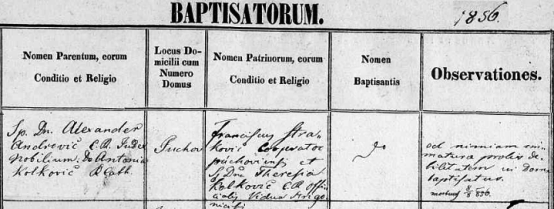
Vicecomes in Púchov Sp. Dominus Mgr. Alexander Androvič (related families Balazsovics, Ondrejkovič, Ravasz, Turba and Zsittnyan politically involved in favor of the Slovak nation). Do Antonia Kolkovič. R Cath. Residing in Puchov. Godparents Franciscus Androvič Cooperator púchoviensi et Sp. DNA Theresa Kolkovič.
In 1847-1948, the chief servant Viliam Paulíny-Tóth, the son of an evangelical pastor, was a teacher at the Lyceum in Kremnica and a captain of the Slovak volunteer corps. After 1849 he worked in the civil service at the county office in Trenčín and as the Chief Servant in Bytča and subsequently in Kecskemét. In 1855 he received a nobility title after marriage, and he joined the surname of his wife, a relative of the Sandor de Szlavnicza family.
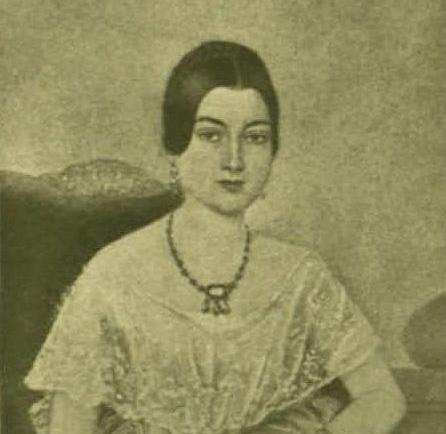
Berta Baroness Mednyánszky de Medné (Sandor de Szlavnicza) married into the family and property of a related family of Sandor de Szlavnicza et Kissándori. Stephan Johannes Lukovicus *08.20.1856 Slavnica, parents Ludovicus Sandor de Slavnica Yeoman and Composesor of Slávnica, Protestant and Berta de Mednyánsky Medné Catholic baptism in Slávnica 08/23/1856. Godparents Karel Sandor de Slavnica, Composesor of Slávnica and Zástupitelkyně absent at St. Crosses Louis Ambrózy widow ed Šándor Baba Child (Maria Royko, the wife of Edward Mednyánsky, Teodor Mednyánsky wife Sita Hamár - Absent :). Name baptizing priest Karel Ludomil Černo. Crossover of child marriage. Baptism took place in Slavnica in a family home.
Gustáv Ostrolúcky *1800 †1862 (príbuzný rodiny Sandor de Szlavnicza) slúžny, generálny perceptor a od r.1840 podžupan Trenčianskej stolice, ako inšpektor evanjelického cirkevného zboru v Zemianskom Podhradí udržiaval úzke kontakty s tamojším farárom Samuelom Štúrom, pochádzajúcim z neďalekej obce Uhrovec. Jeho mladší brat Ľudovít Štúr - jedna z najväčších osobností slovenských dejín - bol častým hosťom fary kde sa zoznámil s Adelou Ostrolúckou, neterou Gustáva Ostrolúckeho, ktorá sa rada zdržiavala u strýka.
Adela Ostrolúcka (* 31. marec 1824 Ostrá Lúka † 18. marec 1853, Viedeň), tak isto ako jej príbuzná, matka Správcu učiteľa Stefana II. Ondrejkoviča Anna Ondrejkovičová rod. Sandor de Szlavnicza bola prapravnučkou významného predstaviteľa evanjelickej šťachty Zvolenského stoličného hodnostára magnáta Juraja IV. Radvanského z Radvaňe a Sajókazy.
The administrative center of the municipalities was the District Notary Office. The notarial office was headed by a notary with the right of veto in decisions of the municipal council. The chief notary had a so-called Vice notaries.
In the 1881, in the provincial village Dolné Držkovce, the district of Bánovce nad Bebravou, the District Notary Dominus Pavol Kmetyko left the world forever. The post was inherited by the notary D. Stephan I. Ondrejkovics, his relative after his honorable mother D. Antonia Zsittnyan.

At the end of the 19th century, the Balazsovics family in Bielice had a large house and a large estate, later managed by their son-in-law Sopko. In 1849 he was mentioned as the owner of the house no. 32 Stefan I. Balazsovics. Local School Commission of August 8, 1869 - its chairman landlord Ľudovít Birly, members of the District Notary Štefan Balazsovics, Štefan Androvič and others. In the years 1893-1895 there was a teacher Štefan Ballay in Velké Bielice. As a pensioner he returned to Bielice. District Notary Stefan II. Balazsovics captured 5 farm quarters before 1918. Eugen Balažovič is listed as fallen on the monument from the First World War.
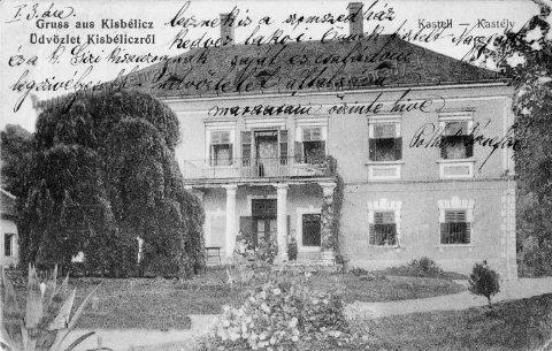
By District notary was in Malé Bielice the late 19th Dominus Michael Turba century, was her husband and mother-in-law and family members Balazsovics and Ondrejkovič. This was also a relative of the genus Sandor de Slavnica.
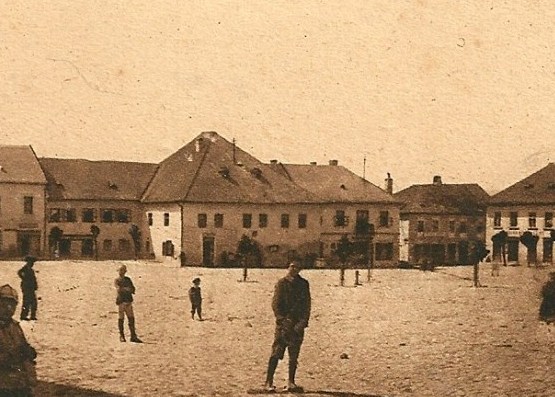
The district and later municipal notary in Prievidza Dominus Michael Turba, the father of the teacher Maria Ondrejkovičová authorities late 19th and early 20th century the town house on Elizabeth's (Masaryk Square).
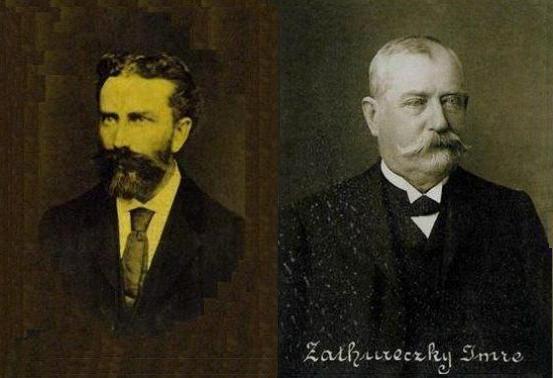
Spectabilis Dominus Alexander Ruttkay - Nedecký and Spectabilis Dominus Imre Záthurecký.
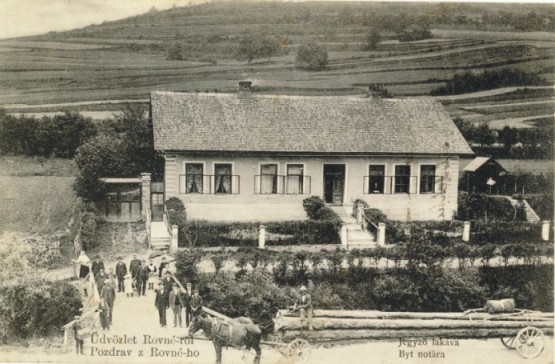
Notary house in the village Rovné. In the village Kolárovice worked in the years 1902-04 teacher administrator Stefan II. Ondrejkovič II. In the Dlhé Pole served his brother in law District notary Rudolf Mičura (*30.05.1881 Dlhé Pole †02.04.1951 Dlhé Pole) and his relative another lawyer Juraj Mičura in the Veľká Bytča.
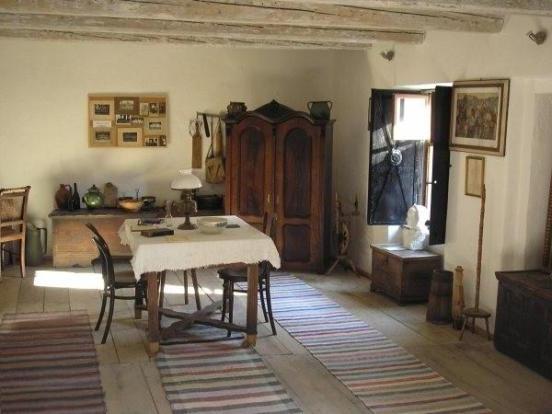
Notary in the village Necpaly was one of five on the Turiec. Managed Žabokreky, Bela, Dulice, Kostany nad Turcom and Turčiansky Peter. Notary Stephen Reindl *08.20.1867 Spišské Podhradie †12.02.1908 Necpaly. He studied at the Teachers College in Spis Chapter House, was a music teacher. Stefan Reindl was the author of a book first published songbook Christmas songs. Taught in Jablonov, Hybe, Liptovská Lúžna, Usti nad Oravou, in Veličná, where he gave up teaching profession. Passed a notary exam and worked in Necpaly. His son was Dr. Karol Reindl. Son of a notary at Varšany district Levice a family friend Ondrejkovič and Mičura was thegovernor of the National Bank in the years 1939-1945 Dr. Imrich Karvaš.
After 1910, the political position of the group formed around attorney Juraj Mičura was significantly strengthened by the marriage of Anna Ondrejkovičová, daughter (granddaughters of Trenčín County Judge Stephan Sandor de Szlavnicza), the most branched notarial family of Nitra and Trenčín County with District Notary Rudolf Mičura.
In the house of District Notary Stephan I. Ondrejkovič (Stephanus Ondrejkovics) as a senior, dear notaries from around the world met. They discussed professional, politically and humanly more delicate issues. They closed them in a general consensus in which Stephanus Ondrejkovics, a tall blue-eyed beautiful old man with white hair and an impressive white beard, had the final say. After exhausting negotiations, the home gentleman held second-class evenings, in which they honored notaries by their four-handed play on cymbalo Lenka and Božka, his young beautiful daughters. Even after many years, the descendants of local esteemed families remember that the notarized notaries have always adhered to the agreements negotiated and concluded here.
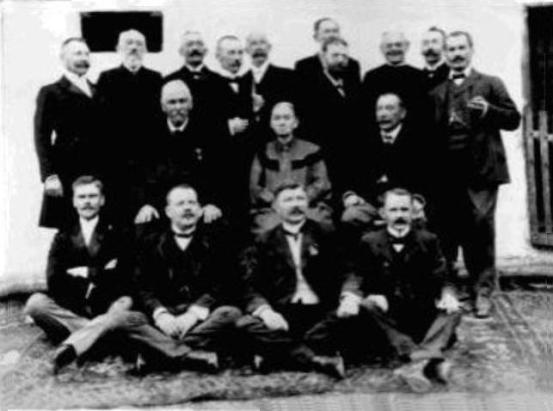
The Kolárovice before the year 1910. Napoleon Tomek notary in Vysoká, editor Herman Tausk, Jakub Tausk notary of the Veľká Bytča, Gejza Draxter accountant of District Office in the Bytča, Gaspar Rovňan notary of the Veľké Rovné (on 14.01.1919 first Slovak Comes Dr. Martin Mičura he installed to the post of Chief of the District Zlaté Moravce), Ľudovít Bíza notary of Belá next Varín, Ladislav Tambor pharmacist of Bytča, Gustav Winter head forester of Petrová, priest Tvrdý, sit Ján Čajda, Róza Čajdová (both related family Mičura) and Ladislav Domanický District Governor of Veľká Bytča, sit on the ground Čajda, undernotary of Bytča, teacher Ján Kľačko and notary Posluch.
District Notary Rudolf Mičura * May 30, 1881 Dlhé Pole †April 2, 1951 Dlhé Pole, was witnessed 08.07.1911 at the wedding of Dr. Martin Mičura and Kamila Fridrichovská.
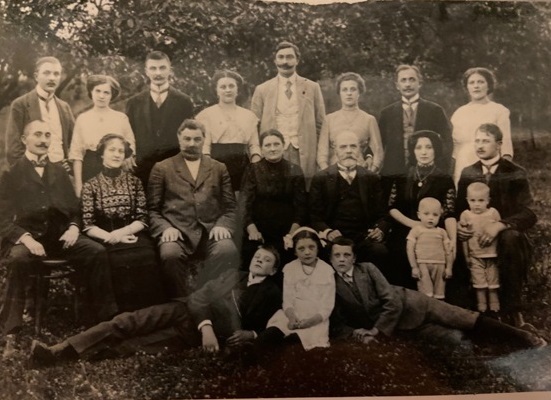
District notary D. Stephan I. Ondrejkovič in the picture from 1912 sitting third from right, next to him on his right sits his Born wife Anna Sandor de Szlavnicza. On the right sits their bride teacher Mária Ondrejkovič family. Turba with the first-born son of the administrator, teacher Stephan II. Ondrejkovič with little sons Stephan III and Aladár II. Above the wife of the teacher is her brother notary D. Stephan Turba, holding hands with his wife Maria Turba family. Ondrejkovič. Prvý zľava stoji Dr. Aladár I. Ondrejkovič. The picture also includes District Notary Rudolf Mičura, attorney Juraj Mičura and Dr. Martin Mičura. District Notary Stephan I. Ondrejkovič was transferred to the function of District Notary in Šimonovany after many years of successful work in the village of Dolné Držkovce. His son-in-law Stephanus Turba was a notary in nearby Velké Bielice. In the vicinity of the Šimonovany area, his other sons, p.p. brother-in-law: District notary Stephanus Androvics, District notary Rudolf Mičura, lawyer, son of notary Karol Reindl, or District Notary for Pensioner Landlord Stephan Balazsovics. In Prievidza and Bojnice there was the father of the notary Stephan Turba and the teacher Mária Municipal notary D. Michael Turba.
Thermal baths in Malé Bielice were well known at that time, visited by respected families from the surrounding area. During their school holidays, the gymnasiums Lenka and Božka sold spa tickets here also by meeting them with a cheerful colleague and friends of their honored father Stephanus I. Ondrejkovič.
District notary Stephanus I. Ondrejkovics was a real and selfless friend of the owner of the estate Simon Salzberger. The landowner was successful in breeding noble racing horses according to the example of Highborn Moric Count Sandor de Szlavnica, cousin of the Enlightened Lady Anna, wife of the District Notary. The strength of their friendship was tested every year by its aggressiveness during the period of the impressive deer of the notary (he behaved according to their family coat of arms), allowed by Mr. Salzberger (perhaps unwise) to keep in his park.
Son of Stefan I. Balazsovics District Notary Stefan II. Balazsovics captured in Bielice 5 farm districts before 1918. Eugen Balažovič is listed as fallen on the monument from the First World War.
Španielska chrípka zdecimovala Európu a svet na začiatku 20. storočia viac než 1. svetová vojna v jej závere v r. 1918. Tragicky postihla aj rodiny Ondrejkovič, Sándor de Szlavnicza a Mičura. Okrem strát životov 4 zo 7 synov Ondrejkovič na frontoch Veľkej vojny aj nákazou a úmrtím Urodzenej pani Anny Ondrejovičovej rod. Sandor de Szlavnicza, jej dcéry, Anny Mičurovej rod. Ondrejkovič s ešte jej nenarodeným dietaťom. Stála život aj advokáta Juraja Mičuru. Štáty správy o pandémii cenzurovali. Neutrálne Španielsko vyšlo s informáciu o pandémii v roku 1918. V roku 1917 sa táto smrtonosná choroba objavila v USA. Rakúsky lekársky historik Harald Salfellner upozorňuje na možný zdroj chrípky z Číny, kde v roku 1917 vypuklo onemocnenie dýchacích ciest, ktoré sa po krátkej chorobe končilo zápalom pľúc. So 140 tisícmi čínskych robotníkov, ktorí mali podporovať Britov vo vojne sa nákaza dostala do Európy. Nákaza v roku 1918 postihovala vojakov na frontoch, v lazaretoch, zajateckých táboroch aj civilistov. Správy, ktoré domov prinesli čs. légionári a zajatci zo Sibíri poukazujú aj na inú trasu šírenia španielskej chrípky a škvrnitého týfusu. Po separátnom vystúpení Ruska z vojny 3. marca 1918 mnohí navrátilci Trojspolku zo zajatia v Rusku boli už chorí a po tisícoch umierali. Aj légionári a Hlavný súdny oficiál Gejza Turba priniesli domov okrem potencionálnej nákazy správy a dôkazy s fotografiami početných komunít výhradne bielo zaodetých Čínanov (zaoberajúcich sa živnosťami v službách - vývarovne, práčovne atď.) na železničných staniciach miest pozdĺž celej Transsibírskej magistrály ktorí zo dňa na deň zmizli.
Aj lode cez prístavy roznášali pandémiu, na jeseň priniesla smrť miliónom. Chrípka ustúpila po konci prvej svetovej vojny. V roku 1919 sa vrátila, doznela až v roku 1920. Ochorelo 500-600 miliónov, tretina svetovej populácie. Odhady úmrtí sa rôznia – od počtu ako v prvej svetovej vojne 17 miliónov po 100 miliónov. Salfellner odhaduje počet obetí v Rakúsko-Uhorsku na 185-385-tisíc, okolo pol percenta populácie. Vznik a priebeh pandémie španielskej chrípky sa kryje s epidémiami škvrnitého týfusu, ktoré prinajmenšom rovnako postihli vojakov a civilné obyvateľstvo. Na Slovensku až do roku 1921. Štatistické čísla z Veľkej Británie uvádzajú, že počas prvej chrípkovej vlny zomrelo desať percent chorých, druhej na jeseň 1918 dve tretiny a na jar 1919 štvrtina chorých. Správy o španielskej chrípke zanikli keď úmrtnosť klesla na úroveň bežnej chrípky. Pri boji so španielskou chrípkou sa začali uplatňovať známe opatrenia. V októbrovej vlne v roku 1918, keď vo Viedni úmrtnosť v porovnaní s predchádzajúcimi chrípkami narástla o 300 percent, úrady vyzvali obyvateľov, aby sa vyhýbali kontaktu s chorými. Zatvárali sa školy, divadlá, továrne pracovali v obmedzenom režime. Podobne reagovala Budapešť.
On 4 November 1918 in the village Jedľové Kostolany, district Zlaté Moravce, Nitra region, citizens killed notary Imrich Šarkády.
Legal power of Czechoslovakia began to operate in the district of Zlaté Moravce 14th January 1919 the arrival of Czechoslovakia. legionnaire. With them came the first Slovak Comes Dr. Martin Mičura and District chief Gašpar Rovňan. State employees of Hungarian nationality escaped or refused to work for the new state and also withheld Hungarians. "It was necessary to expel them beyond the borders and replace them with volunteers from the Czech lands in order to return the work to normal track," says the chronicle.
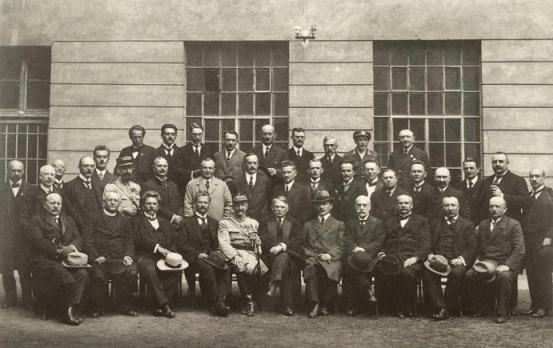
The first ministry with power of attorney for the Administration of Slovakia in front of the government building at Gondova 2 in Bratislava. In the picture in the second place is also apparently impressive Tekov and Nitra Comes Dr. Martin Mičura and 4th of the left Dr. Milan Ivánka de Draskócz et Jordánföld. Ivan Krasko (Ján Botto) is tenth in the same row. Above it is Janko Jesenský, who is on the fifth right. In March 1919, on the initiative of Comesa Dr. Martin Mičura started publishing Slovak newspaper "Tekov" in Zlaté Moravce. On June 3, 1919 the Red Army occupied Zlaté Moravce and Topolčianky the Order of the Hungarian Republic and local Soviets were created. On 6 June before the Czechoslovak. Legionaries local units of the Red Army withdrew to Levice and strengthened by the Left Battalion on June 7, re-occupied Zlaté Moravce. Already on 8 June, the Czechoslovaks printed them from Zlaté Moravce and its surroundings. Pilsen Infantry Regiment no. 35 and the Hungarian Red Army drove to Hron.
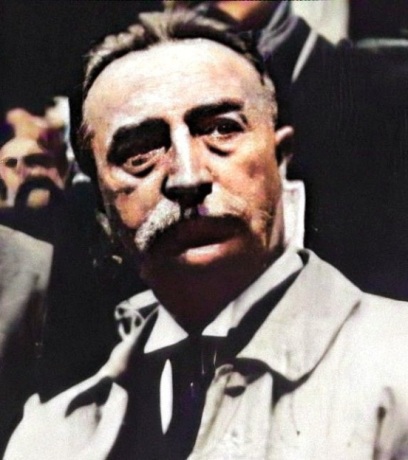
Tekov and Nitra Comes In 1919 Dr. Martin Mičura named, among other things, the Chief Servant in Levice Dr. Viktor Ravasz and in Velké Topolčany Dr. Aladár I. Ondrejkovič. Dr. Martin Mičura at the same time as the Presidial Ref. county office in Nitra received a colleague Dr. Aladár Ondrejkovič from PF studies in Budapest Dr. Ivan Štefánik, a member of the yeoman family from Brezová pod Bradlom and also a relative of the notary Dr. Ladislav Štefánik and General M. R. Štefánik.
Začiatkom roka 1919, minister s plnou mocou pre správu Slovenska Dr. Vavro Šrobár vymenoval Štefana Ravasza farára v Horných Šipiciach (neskoršieho dekana v Starom Tekove) za Hontianskeho župana. Jeho brat Dr. Viktor Ravasz bol vládny komisár v Leviciach. Štefan Ravasz funkciu neprijal. Región Hontu považoval za veľmi riskantné územie vzhľadom k tomu, že časť hranice tohto regiónu resp. župy bola i štátnou hranicou medzi novovznikajúcim Československým štátom a Maďarskom. V celom Honte bolo málo spoľahlivých Slovákov. Okrem Štefana Ravasza bol to ešte evanjelický farár v Teranoch Gustav Koričanský, Samuel Kramár v Lišove a farár v Hontianských Nadošanoch Vendelín Sahulčík a ďalší dvaja - traja.
On the recommendation of the District Notary in Šimonovany appointed JUDr. Martin Mičura in 1919 Valentín Beniak as chief notary in Chynorany.
ISSN: 1337-1479 Narodni noviny, Volume: 1921, Issue: 16.9.1921, Page: [3] ... request that it be taken over by other Slovak newspapers. The continuation of the Gendarme Station in extinguishing the fire was really exemplary and served to strengthen Czech-Slovak reciprocity. Vojtech Ondrejkovič, district notary ...
In the years 1920-1922, Dr. Martin Mičura was Minister of Power of Attorney for the Administration of Slovakia in Bratislava. In his subordinate places he sought to review all the notaries appointed. It should lead to democratization and bringing it closer to the population. Important was also the abolition of municipalities in Slovakia except Bratislava and Košice and the nationalization of the police. Since his inauguration as Minister, Dr. Mičura demanded that a foreign office be established in Bratislava.
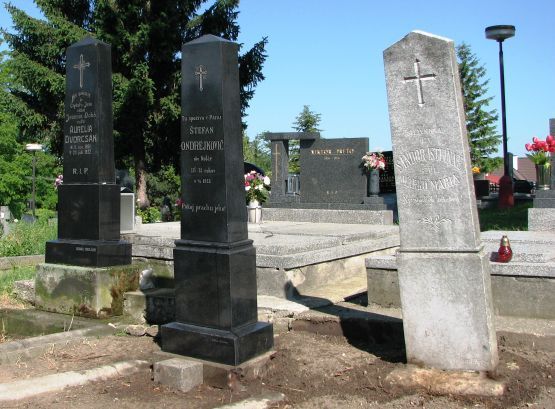
Tombstone from District notary Stephan I. Ondrejkovič in Veľké Bielice, the writer's great grandfather after repair. On the right is the gravestone of his father-the author's great-great mothers milady Mária Sandor de Szlavnicza born Marko.
Priest The Honorable Mr. Michal Balažovič born in the village of Veľké Bielice on 16.09.1885 (father Ján Balažovič) graduated from high school in Nitra in 1899-1903, theological studies also in Nitra in 1903-07. He was consecrated as a priest in 1908, chaplain in the village of Predmier, Nováky, Kysucké Nové Mesto and Long Pole (from 01.07.1914). Military service 1915-17. Since 1919 the administrator was in Klátová Nová Ves, 1921 chaplain in Stará Bystrica, since 1922 out of service. In the village of Velke Bielice was also a chaplain and other relatives of the family Ondrejkovič High Lord Joseph Schurmann January 15, 1890 - October 10, 1890, born. April 9, 1862, died in Novi Sad in 1915. He was incarded in the diocese of Esztergom. He worked in Bielice because of the age of Dean Michal Minár. After 1923, a member of the municipal government was a notary public on the pension Dominus Stefan Balazsovics. Helena Balažovičová, Gustáv Kedrovič, brothers Salzberger, Mr. Štefan Országh, etc. also contributed to the fire brigade of the voluntary fire brigade. Since 1943, Ivan Krasko was a notary public in Piešťany (Ján Botta was probably a relative of the Turba family),
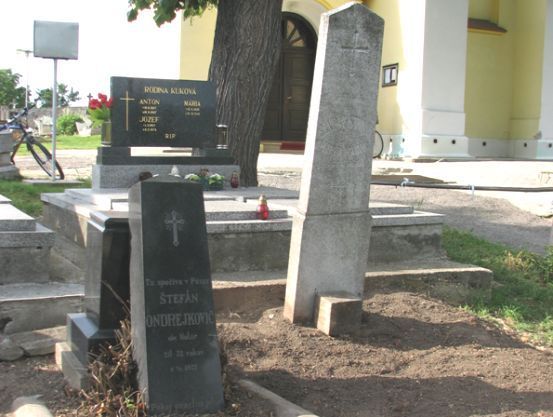
Tombstone of the District notary Stephan I. Ondejkovič in Veľké Bielice. On the right is the tombstone of his mother-in-law Mother of Mária Sandor de Szlavnicza genus. Marko. Activities reviving the history of Upper Nitra are dealt with by one of the personalities of the town of Partizánske Mr. Peter Múčka together with his friend Juraj Krasula. These include the publication of collected materials, their preservation and indetification together with the repair of tombstones in order to preserve the historical background for future generations.
_____normal_dot_kirovsky.200213_135838_23.jpg)
Chronicle ronika from the village Dolné Držkovce (of the yeoman village) from 1933 to 1954.
Minister of the Interior dr. Slávik about conditions at the Regional Office of Slovakia. Prague, 7 February. In the Chamber of Deputies, a reply was given to the interpellation of Deputy Hrušovský on the matter of the regional office in Slovakia and the political administration of Slovakia. The answer states that the claims of interpelants as if in the political administration of the country were taken over by a number of people from the Hungarian county administration, who are negative thinking of Czechoslovakia and have not yet adopted the state language and that some offices in Bratislava. As far as knowledge of the language is concerned, the only case was found that an official otherwise loyal does not yet know the state language. Political Administration Adviser Dr. Domanický is only an assigned official, so his work is subject to approval and revision. Since 1920, it has not given rise to any substantiated complaint. His relationship with the two Hungarian officials is in the land office. Likewise, the head of political administration, Dr. Béla Badík, performs only an assigned official at the regional office and did not commit anything harmful in or outside the office. Chief Commissioner Dr. Karol Reindl (husband of Lenka Ondrejkovič) has been in the civil service since 1922 (received by the Minister of Administration of Slovakia Dr. Martin Mičura, his relatives through the Ondrejkovič family) and was assigned for his special qualification already during the Ministry of Administration of Slovakia , where he enjoys complete confidence, which would not be possible if he were exposed to the policy of former MP Dr. Vojtech Tuka (he had very bad relations with Dr. Martin Mičura), as he mistakenly claims. Source: newspaper "Slovak country" of 8 February 1931 p. 3.
The political administration of the country of the Slovak Land, namely in terms of achieving perfect operation, still pays close attention to the Minister of Interior and sees no reason for any action.
Juraj Jurkovič notary in the Brezová pod Bradlom father of architect Dušan Jurkovič.
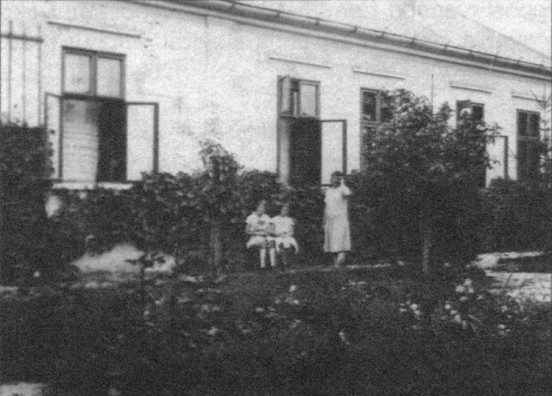
Sesternica pani Márie Ondrejkovičovej rod. Turba slečna Helena Balažovičová (dcéra Obvodného notára) s neterami v medzivojnovom období.
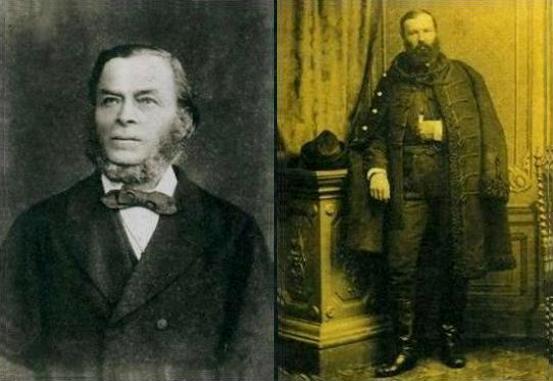
Spectabilis Dominus Joseph Horváth and Spectabilis Dominus Joanes Jesenský of Gaspar, relatives of family Ondrejkovič -Sandor.
In the years 1850-1922, the Servents authorities were administrative-political bodies, their competence was to put instructions and adjustments of higher bodies into practice, to report and report, to handle administrative-political and judicial matters, tax, accounting and treasury agenda. The office of the Chief Servend in Topolčany was located on Stummerova Street 12 in the house, owned by Ján Pokorný. In addition to the office there was the apartment Chief servend Alojz Markovic, December 1, 1918 escaped from the city after the important official files burned. After his departure, led from December 9, 1918 to January 13, 1919, Servant's office Emil Buzna, before the war he served as a district servant in Senica. From January 1919 as Chief Servant as Rudolf Dobrkovský, in 1920 replaced him Dr. Alois Baška, replaced by Dr. Václav Blah. He was transferred to the post of deputy robe in Šahy in Hontian county and therefore 30 June 1922 handed over the office of JUDr. Aladár Ondrejkovič, stood at his head until the office in 1923.
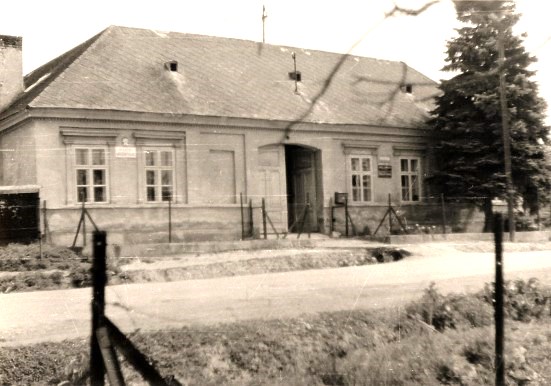
Notarial office in the village Lukáčovce. The building was built in 1892 on the left side of the brook, on the road leading from Alekšince. In the narrow middle room was stored municipal and notary archives and cadastral maps. The third room served as an auxiliary notarial force. The Notariat was subject to the Servend Office in Topolčany, which was headed by the Chief of the Servant (after the reform and subsequently as the Deputy Chief) JUDr. Aladár Ondrejkovič until he was transferred to the District Chief in Považská Bystrica. The owners of the manor house in Lukáčovce were Gasparus IV Baron Sandor de Szlavnicza and his wife Elizabeth Baroness Thököly de Késmárk. The Sandor de Szlavnicza family of Dr. Aladár Ondrejkovič lived in the village Lukáčovce until 20 century.
In the autumn of 1921 in Topolčany was forced the headquarters of the town school to open secondary classes, as it was attended by pupils of the Talmud school, then closed. The municipal council disagreed with their opening and therefore, at the time of enrollment for the 1922/1923 school year, the parents of the children from the villages put pressure on the school head to enroll all children. On the proposal of Chief Servant JUDr. Aladár Ondrejkovič and in the presence of the District School Inspector Jozef Paulovič, public notary JUDr. Julius Brezny and Communist Mayor Ernest Andreazza were convened a parental meeting at which they held a collection to maintain a parallel class. A committed parents' approach has yielded results and the class has worked through the collection. However, the situation became more complicated and the number of pupils increased. In addition, the school year 1923/1924 began to apply in practice. a small school law according to which all eligible children from the local community should be enrolled in the town school. Thus, for the first time the school found itself in a situation where not all enrolled children could be admitted. In connection with the increased number of pupils at the secondary school, the establishment of a grammar school was already considered in 1923. It was necessary to realize its extension. The District authorities were abolished on 1 January 1923 by reforming the political administration. In addition to their abolition, the District Offices. The reform also affected the administrative division of the district, when the reorganization was abolished districts of Oslany and Žabokreky and most of their municipalities were incorporated into the District Topoľčany. There was a chief on his forehead. Dr. Aladár I. Ondrejkovič, until being transferred to the District Chief in Považská Bystrica, represented the District Chief in Topolčany, dealing with general issues, citizenship issues, water management issues, offenses and wage disputes.
3. Obvodný notár v Čornoku Fábry Eduard, bol preložený k notárskemu úradu vo Svinnej a správou jeho poverený. Jeho preloženie k notárskemu úradu v Oslanoch bolo zrušené. Zdroj: Úradné noviny Nitrianskej župy 1.augusta 1925 č.16.
9. Obvodný notár u Okr. úradu vo Vrábloch Vojtech Ondrejkovič bol preložený a poverený správou notárskeho úradu v Malých Vozokanoch. Zdroj: Úradné noviny Nitrianskej župy 1.augusta 1925 č.16.
Brat Stefana II. Ondrejkoviča Vojtech Ondrejkovič pôsobil istý čas v obci Jedľové Kostoľany ako notár, údajne aj v obci Dolné Držkovce a neskôr ako hlavný notársky tajomník pôsobil v Piešťanoch, kde je pochovaný. Nie je jasné, že v roku 1940 je uveďený ako matrikár v zemianskej obci Dolné Držkovce Stephan Ondrejkovič.
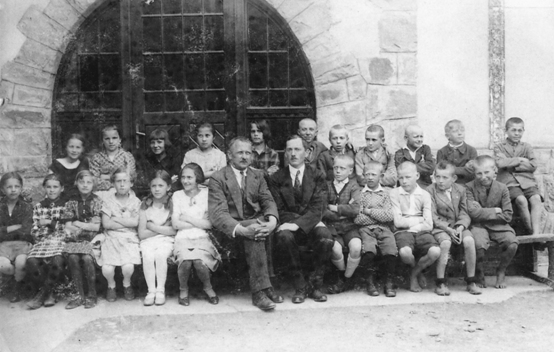
Son of Anna Sandor de Szlavnicza and District notary Stephan I. Ondrejkovič, administrator teacher Stephan II. Ondrejkovič with colleagues and students in Lednické Rovné to about the year 1928.
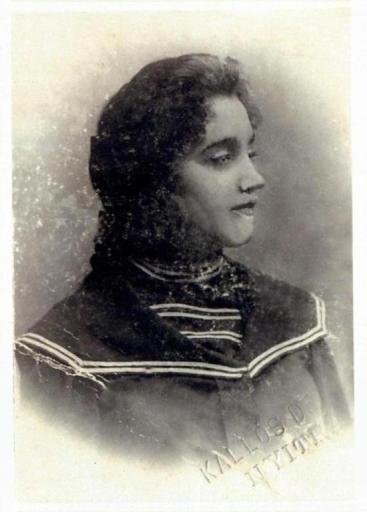
The teacher Maria Ondrejkovičová born Turba (jej krstní rodičia Dominus Július Némethy a manželka Júlia, krstiaci kňaz Ignatius Lukács, rok 1417: Ladislaus de Nemethy castellanus de Baymoch), whose father was District notary Mr. Michael Turba and whose grandfather was District notary in Veľké Bielice Mr. Stefan I. Balazsovics. Education and training acquired in the girls convent school in Esztergom. Her cousin Sir Stefan II. Balazsovics was in the interwar period in Vráble district chief and the cutting. She married the manager of the teacher Mr. Stefan II. Ondrejkovič son District notary in the Dolné Držkovce and Šimonovany Mr. Stefan I. Ondrejkovič. Mr Štefan Turba, her brother and husband of Mrs. Maria, the sister of her husband was mayor Bratislava until about 1947.
JUDr. Ivan Štefánik, kolega zo štúdií a priateľ Dr. Aladára I. Ondrejkoviča bol z Krajinského úradu v Bratislave v roku 1939 preložený do Košíc, kde sa stal prednostom mestského notárstva.
Syn Stefana II. Balazsovicsa Okresný náčelník vo Vrábľoch (Stefan Balazsovics III.) bol od r.1933 bol vymenovaný do rovnakej funkcie v Košiciach a druhý syn bol lekár.
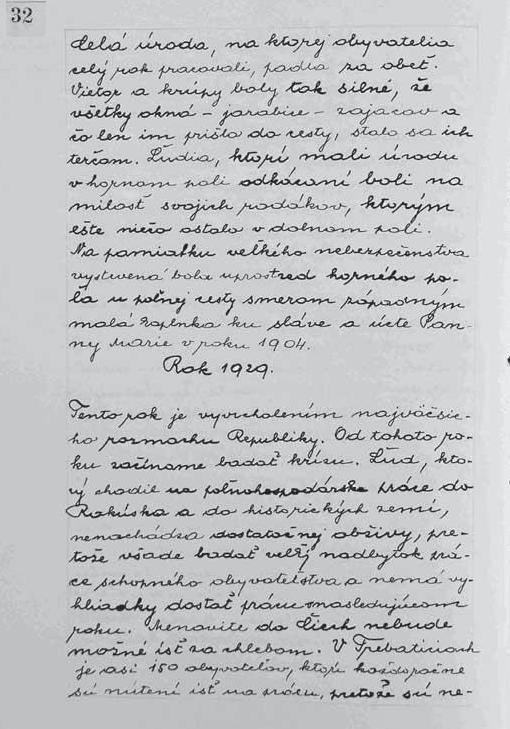
Letter of Chronicles in Trebatice led by teacher Manager Stefan II. Ondrejkovič, eldest son of a District notary Stefan I. Ondrejkovič and Domina Illustrissima Anna Sandor de Szlavnicza.
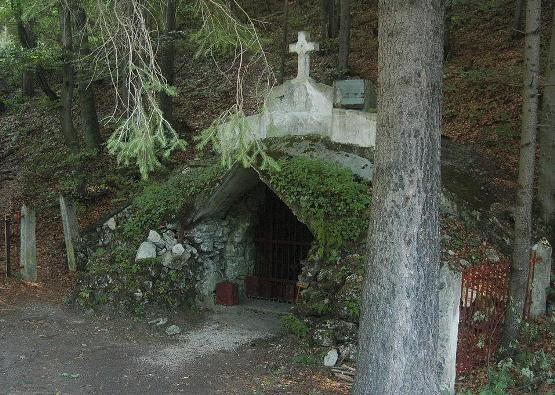
Pri prameni rieky Nitra sa nachádza Lurdská kaplnka ktorú v roku 1931 postavil katolícky kňaz a profesor Jozef Stephanus Bossányi. Upravil aj prameň rieky. Ako pedagóg synov Mestského notára v Prievidzi D. Michaela Turbu, ktorý finančne podporoval jeho aktivity mal vplyv na formovaní záujmov známeho amatérskeho archeológa a zakladateľa Muzeálneho spolku Hornej Nitry ctihodného D. Gejzu Turbu, budúceho spolupracovníka, spojenca a príbuzného cez rodinu Ondrejkovič. Prameň národnej rieky Nitry sa nachádza 2 km za Fačkovským sedlom, po pravej strane štátnej cesty I/64 na Prievidzu, vyviera pod vrcholom Reváňa (1 205 m.n.m) na južnej strane svahov Lúčanskej Malej Fatry v katastri obce Kľačno. Kňaz a škôldozorca Jozef Stephanus Bossányi tu pod Kľakom postavil na svoje náklady v roku 1931 turistickú ubytovňu.
The world economic crisis caused that in 1933 there were one million unemployed in Czechoslovakia. The author gives an example of social policy as told by his grandfather administrator administrator. In the villages there was a house of the poor, it served for those who found themselves on a social day. According to their Home Letter, the cops transported the unemployed to their home village, which had to take care of them in the poor house there, and the individual peasant families were obliged to change their livelihood after a week. The organizational matter was supervised by notaries, including the District Notary Vojtech Ondrejkovič in Jedľové Kostoľany.
National newspapers, Volume 1933, Issue: 08.12.1933. Štefan Balažovič was appointed by the Regional Office in Bratislava as the new District Chief in Košice. The office joined before Christmas.
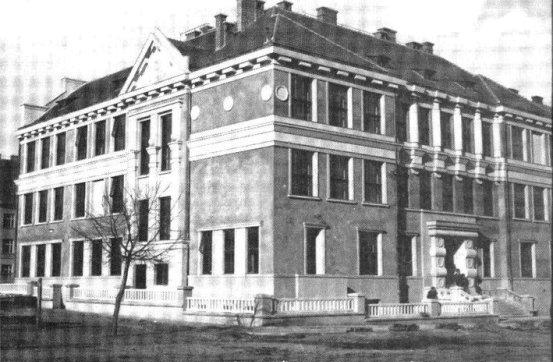
State business school in Nitra, Cintorínska No 4, Nitra 1934 where graduated Lt. colonel tank Aladár II. Ondrejkovič of notarial family and his classmate General Antonin Petrák. OA in the Nitra study too Tibor Ondrejkovič.
The monograph "Our hunting" was published in 1934. Her authors were Cyprián Čech, František Vodička and Dr. Viliam Záborský.
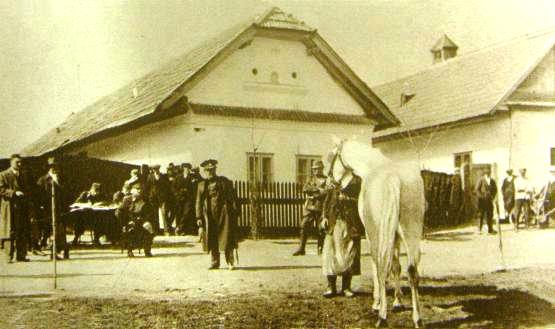
Military Levy horses for hypomobile units of the Czechoslovak Army in Slovak Meder in the Nitra region in the year 1936.
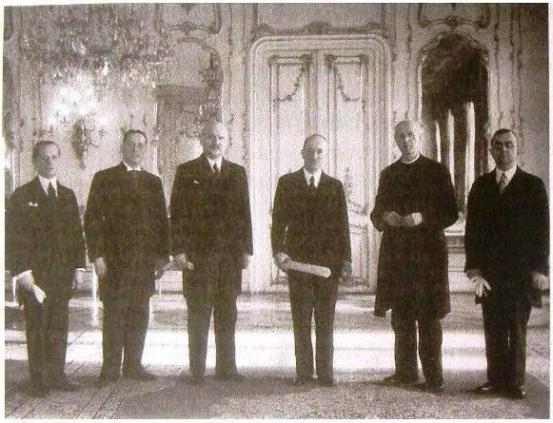
Reception of Slovak landscape of the Prague Castle in Prague in 1937. Second from left Dr. Karol Reindl (his wife the daughter of District notary Stefan I. Ondrejkovič, granddaughter of County judge Stephanus Sandor de Szlavnicza and sister of the District Chief Dr. Aladár Ondrejkovič), in the middle of Czechoslovak president Dr. Edward Beneš, beside him Andrej Hlinka. In the picture is too Dr. Vojtech Kállay.
Dr. Viktor Ravasz was in 1919 appointed Comes of Nitra-Tekov and founder of the local SNR and the National Guard around Bytča Dr. Martin Mičura a government commissioner and principal Vicecomes for Levice (MEP from 1925-35, 1935-39 and Sen. public notary *1887 †1957, (genus Ravas was also related to gender Sandor marriage with Anne Ravas and Juraj Sandor de Szlavnicza) won the parliamentary elections in 1925, parliamentary seat in the National Assembly. Defended his mandate in elections in 1929, the same year he was a notary public in Levice. 1923 was one of four vice Party and in 1926 was represented by the five-member Directors who govern the Hlinka People's Party, a period when he was Andrej Hlinka outside the country. Later he moved to the upper house of parliament. In the parliamentary elections in 1935 he won for Hlinka's Slovak People's Party, respectively for the broader opposition alliance senatorial seat in the National Assembly, where he served until the expiry of the state. In 1935, he leaked the news that he was a member of the faction that opposed Andrej Hlinka. In September 1935 he was expelled from the party threatened him because of the practice of tying the mandate waiver senatorial mandate. Dr. Viktor Ravasz from fractional activities and mandate distanced himself retained. In opposition to the Hlinka he was also involved his brother Dr. Stefan Ravasz..
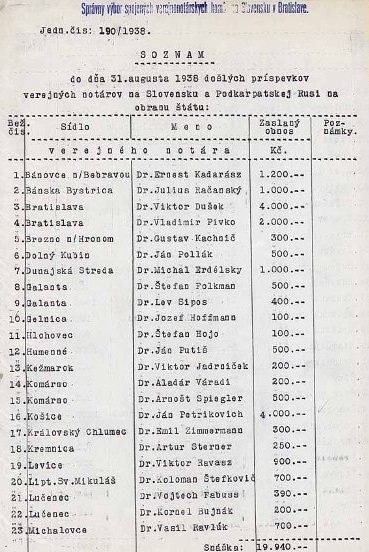
List of financial contributions of the Public Notaries for the Defense of the Republic from Slovakia and Ruthenia until 31 August 1938. Dr. Viktor Ravasz contributed CZK 900.
JUDr. Imrich Karvaš sa stal ministrom bez portefeuille v úradníckej vláde generála Syrového 22. september - 4. október 1938. V druhej úradníckej vláde generála Syrového od 4. októbra až do 1. decembra 1938 zastával syn notára vo Varšanoch Okres Levice JUDr. Imrich Karvaš post ministra priemyslu, obchodu a živností. V roku 1939 sa Imrich Karvaš, priateľ rodín Ondrejkovič a Mičura stal guvernérom Národnej banky SR.
STK. Bratislava, 17. mája 1939. Dedičia advokáta Juraja Mičuru a jeho manželky - dr. Martin Mičura, Rudolf Mičura (manžel nebohej Anny Ondrejkovičovej a otec ich dcéry Melánie), Andrej Mičura a bratia Malobickovci odovzdali Národnej banke Slovenského štátu z pozostalostí 160 dukátov (podľa pani Sidónie Hutárovej pochádzalo najmenej 100 z nich z pozostalosti po p. Anne Mičurovej rod. Ondrejkovičovej a jej dcéry Melánie ktoré časť z nich obdržali od Sidónie Rovnianekovej, dožila v ich domácnosti), medzi ktorými je väčšia polovica cenných dukátov, ktoré majú nuzmatickú hodnotu. Zdroj: týždenník "Slovák" z 18. mája 1939 str. 2.
V roku 1939 sa bývalý notár Valentin Beniak presťahoval do Bratislavy, kde pracoval ako úradník na MV SR. V roku 1939 bol zvolený za predsedu Spolku slovenských spisovateľov.
Počas existencie vojnovej Slovenskej republiky bol Dr. Viktor Ravasz zvolený za predsedu poradného zboru Štátnej rady Slovenskej republiky.
Vojtech Ondrejkovič worked for some time in the village Jedľové Kostoľany of the District Zlaté Moravce as a notary and perhaps also in the village of Dolné Držkovce and later in Piešťany, where he is buried. It is not clear that in 1940 is listed as a registrar in a yeoman village of Dolné Držkovce Stefan Ondrejkovič.

Former notary secretary in Liptovský Mikuláš Albert Okolicsányi (his wife was Janko Alexy's sister-in-law), and later the head of the state registry office in Bratislava had not only common hunting interests with the chief notary secretary Vojtech Ondrejkovič, but also his relatives through the Sandor family. He shared interests, professional and social relations with Dr. Viktor Pavella, Dr. Karol Reindl, Dr. Aladár I. Ondrejkovič, Gejza Turba and JUDr. Martin Mičura and former President of Slovak Land Dr. Jozef Ország. The hunters also hired Swiss vice-consul Dr. Hans Keller. As the head of the state registry office in Bratislava, Albert Okolicsányi signed a marriage letter in the spring of 1944 of his relative, the lieutenant of the army in the backs of Aladar Ondrejkovič and Alžbety Ličková, despite the fact that the bride was subject to restrictions on racial grounds.
_____a_43.80313_145526_23.jpg)
Public notary in Spišská Nová Ves JUDr. Ladislav Dusan Stefanik family friend Ondrejkovič. During his military service in Spišská Nová Ves lived on Levická 1 with him lietn. cavalery Aladár Ondrejkovič. Served with his son lietn. cavalery Pavel Stefanik during his military service in the Dragon regiment No 11 King Carol II of Romania "KC II R". Both were released from Cs army in 1953 (Action D). Persecution officers proactively manage state security officer Bedřich Pokorný at the instigation of his superiors.
_____6minniepavella.291015_124011_23.jpg)
Former chief notary secretary in Liptovský Mikuláš Albert Okolicsányi and later head of the State Matricious Office in Bratislava. For Dr. Hans Keller, Slovak mountainous areas with their huge forests were the ideal hunting ground. Slovak friends, whose hunters often fled in wooded areas of Slovakia and Sub-Carpathian Russia, later made it much easier for him to buy wood, charcoal and other goods for Switzerland suffering from a shortage of raw materials.
V Liptovskom Jáne bol Obvodný notár Július Pavella, otec Hl. radcu MV Dr. Viktora Pavellu (krajana o kolegu Hl. radcu MV Dr. Karola Reindla), svedka na svadbe npor. aut. zál. Aladára II. Ondrejkoviča a Alžbety Ličkovej.
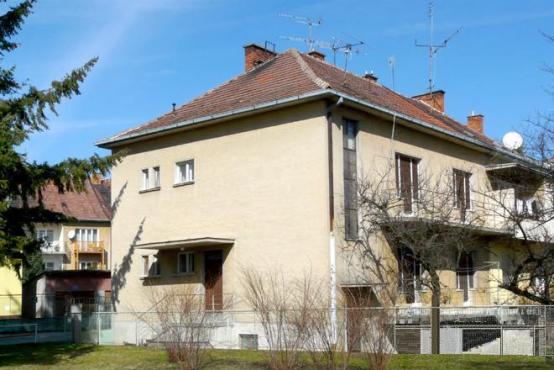
Chief Secretary notary Vojtech Ondrejkovič he end his career at Nálepkova 7 Piešťany, where he built a house. Near the villa had Mrs. Elenka Žuborová born Fraštacká. Address by the Minister for Defence General Ferdinand Čatloš by the District Chief Dr. Aladár Ondrejkovič and his brother-in law Dr. Karol Reindl was former Lieutenant colonel František Borský (Zigmund Berger) born in village Sandorf employed since April 1943 despite anti-Jewish restrictions as an accountant at the State Land Office in Piešťany, where he was principal secretary notary Vojtech Ondrejkovič..
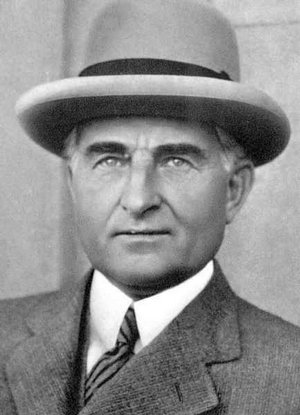
Colleague and frend of Vojtech Ondrejkovič in Piestany was a notary, poet and senator Ivan Krasko - Ján Botto (1), whose superiors were the Minister Dr. Martin Mičura, then Provincial President Dr. Jozef Országh and Dr. Karol Reindl. From literary artistic circles were friends of his family in Piešťany Janko Alexy and spa doctor, poet Gejza Vámoš.
Gloom, getting dark, the night is coming.
From the mountains, the woods are crying, wailing over ...!
Remorse unknown souls caught.
... Fill hope not force -
fit, fit in a hurry living ...
The clouds are low and going, going ...!
Sues desperate actions vain
whoos'more poor and the wide world.
he believed that expected to start, start ...
Gloom, getting dark. From above and below
Ravens walked into the night SPES ...
whoom'more poor calls for help,
in the face throws us sinful memories ...
Gloom, we will go ... The night is already half.

District Chief in Stropkov Dr. Alexander Lušček, a friend of the notary family Ondrejkovič (brother in law of General M. R. Štefánik) has been since 1939 in Kežmarok. Kežmarok Department of the Slovak Tourist and Skiers Club headed by its Chief of District Chief Dr. Alexandr Lušček was already thinking of building a new cottage in the White Ball in 1937. In 1940 construction started to be funded. Kežmarok cottage was completed October 11, 1942. Vice-consul of Switzerland, Hans Keller, has traveled both business and private to Eastern and Central Slovakia (including the Carpathian Ruthenia) in 1985 (Geschichte historisches Magasin Nr. 69, March-April 1985, pages 14-23) goods imported from 1939 to 1945 into the Slovak Republic have found their way into the militarily occupied Poland.
Pravnuk Samuela Jurkoviča evanjelický farár a.v. Dr. Ladislav Jurkovič sobášil npor. aut. Aladára II. Ondrejkoviča a sleč. Alžbetu Ličkovú na jar 1944 v kostole na Legionárskej ul. v Bratislave na základe seniorskej výnimky, ktorú im udelil jeho otec senior ev. cirkvi a.v. Dr. Vladimír Jurkovič, brat Dušana Jurkoviča.
More than 14 years after the death of Dominus District notary is entered fiery great ring around Moric Salzberger and children from racial grounds. I do not feel as a Jew and also to the way of life adapted to his surroundings. In August 1937 he was elected honorable member of Masaryk Air League MLL. Therefore likely not to realize sufficiently that his friend and defender of Stephanus Ondrejkovics for some time and died for his family is the most sensible solution to emigration. Mr. Salzberger sell their estate company Baťa, probably before 1939. He and his children were given exemption from the racial laws. According to the author information orally administered local people in the Veľké Bielice, in the year 1945 (according to them they felt Hungary) joined Moric Salzberger family to the Hungarian army, which retreat cross Šimonovany through the Soviet Army, and went with them to Germany. Similar information is repeated in the periodical press. When you visit the author Bošany four years ago, said Mr. Mayor on this event something else. To confirm the information gave me the phone number of Mr. Seman, Salzberger nephew. That to me after the performances and mutual familiar with our family circumstances, said that his mother, his father and himself imprisoned after the uprising and deported Hlinka Guard members that have done to jewish Mr Seman procedure. Mother was, however, Slovakin, and on how her son was a derogation from the racial laws. Exemption from the racial laws cover the father, because his wife was Slovakin. Nevertheless, they all deported to concentration camps in Germany. Ms Semanová died in concentration camps and the father died when Mr. Seman exhaustive hunger-march. Seman junior survived only as strong young man. After the war he returned to the Bošany. Sought his family in Simonovany Salzberger. When confidential information is learned that Mr. Móric Salzberger with family shoted guardsman and dig in behind the village to ground. According to his testimony, Mr. Seman care of exhumation and proper interment of those members of his family.
Then just have the wind of time and oblivion forever closed the past and the future of weighted local families.
Vo funkcii predsedu Spolku slovenských spisovateľov zotrval bývalý notár Valentin Beniak inštalovaný JUDr. Martinom Mičurom do roku 1945, kedy začal pracovať na Povereníctve školstva a osvety. Literárne mal blízko k Ivanovi Kraskovi. V roku 1947 odišiel do dôchodku.
Na rodinnom majetku v Bieliciach zostala dcéra Ilona Balazsovics, neskôr vydatá za Sopku. Obaja jej synovia odišli do exilu. Po roku 1948 bola ich rodiná kúria miestnym obyvateľstvom spontánne vyrabovaná a veľkostatok skonfiskovaný. Podľa svedectva pamätníkov stará pani dožila medzi potkanmi v pivnici.
Mjr. jazd. Pavel Štefánik a kpt. aut. Aladár II. Ondrejkovič boli prepustení z ČSLA v r.1953 (Akcia "D"). Prenasledovanie dôstojníkov, svojich bývalých kolegov iniciatívne riadil dôstojník ŠtB Bedřich Pokorný na podnet svojich nadriadených.
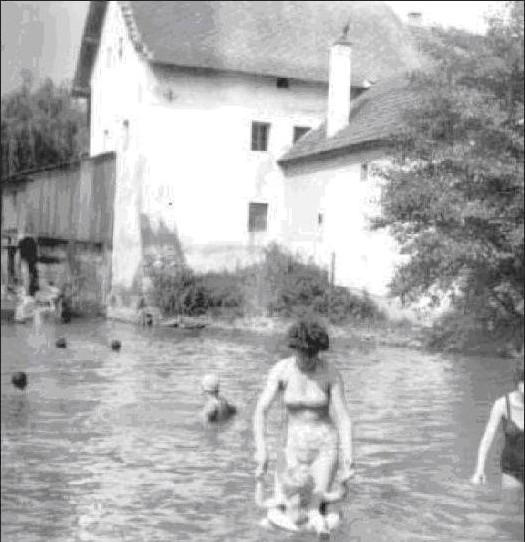
Vodný mlyn pána Gustáva Kedroviča, spolužiaka a priateľa generála M. R. Štefánika z Evanjelického lýcea a príbuzného rodín Lábady, Ondrejkovič, Wunder a Turba okolo roku 1967.
V sedemdesiatych a osemdesiatych rokoch 20. storočia bol primár Urológie na Hlbokej v Bratislave MUDr. František Lábady (nar. v Chynoranoch) bratanec pplk. tank. v. v. Aladára II. Ondrejkoviča a Kedrovičov vnuk.
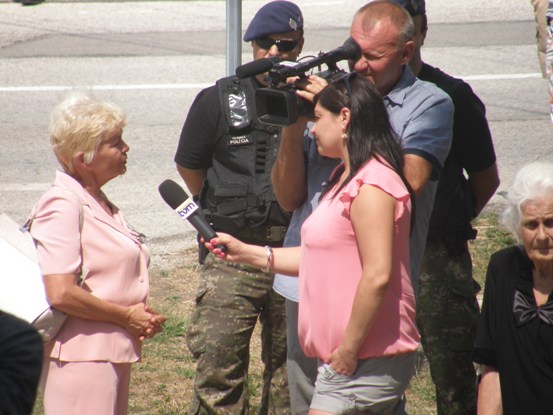
Technical squadron commander daughter Equestrian speh section (JPO-1), the Securing Division Cavalry First lieutenant Pavel Stefanik and granddaughter of Notary Public Dr. Ladislav Stefánik (brother of General M.R. Stefanik) and niece of the District Chief Dr. Alexander Luštek (brother in law of General M.R. Stefanik) Ms Tamara Dudášová born Štefánik attended the July 25, 2015 in Košariská ceremony commemorate the 135th anniversary of the birth of General M.R. Stefánik. Father, grandfather and uncle were Mrs. Tamara's friends family Ondrejkovič and Turba. First lieutenant cavalry Pavel Stefanik was commander of the squadron Slovakia the Securing technical divisions on the Eastern Front and then officer the Czechoslovak 1st Army Corps in the USSR. He was twice wounded at Dukla.
Notes: Hajduş of Stephanus Bocskay in May 1605, under the command of Gregorius Némethy, crossed the Bratislava Danube and began to float in Transdanubia, Austria and Moravia ; In the winter of 1710 in the Veľké Rovné Kuruz Tomáš Uhorčík he is hiding after escaping from captivity in the castle prison in Bytča. To help him escape former Kuruz, imperial soldier Juraj Janošík ; JUDr. Ivan Štefánik *09.09.1889, father Štefan Štefánik *03. 01.1857, mother Anna Štefániková (born Poláčková) *14.08.1867 ;
Son of District notary Stefan I. Ondrejkovič Vojtech Ondrejkovič was District notary in the village Kostolné Kľačany ; District notary Mičura Rudolf *30.05.1881 Dlhé Pole †04.02.1951 Dlhé Pole was on 08/07/1911 witness at the wedding of Dr. Martin Micura and Kamila Fridrichovský ; On October 30, 1918 at Jedľové Kostoľany killed citizens of a notary ; In March 1919, on the initiative of governor Dr. Martin Micura started in Zlate Moravce issue Slovak newspaper "Tekov" ; ISSN: 1337-1479 Národnie noviny, Volume: 1921, Issue: 16.9.1921, Page: [3] ... request that it take other Slovak newspapers. Continued police station to extinguish the fire was really exemplary and serve to fix the Czech-Slovak reciprocity ; Spa Piestany were Compossessorate of Erdödy family, multiply by blood and property-related with the family Sandor de Szlavnicza ; Activities reminding the history of the Upper Nitra is engaged in one of the city's personality Partizánske Mgr. Peter Múčka. These include, but are publications collected historical documents and save them and indetification. Even gravestones notary Ondrejkovič Stefan and Maria Sandor of Szlavnicza born Marko in photos of the Great Bielice identified and repaired selflessly to preserve historical documents for future generations along from your friends Mr. Juraj Krasula that the Municipal Parliament in Partizánske, Bieličan. Without it, it would not be easy ; (1) Jaromír Botto, Eva Mňačko born Botto, Anna Viera Zvarík ex Dibarbora born Botto ;
Source: Newspaper - Národní politika 17.08.1928/5, 12.10.1929/4, 13.10.1932/3 ; Český deník 07.08.1930/3, 03.09.1936/2 ; Lidové noviny 05.04.1927/4, 06.09.1932/3, 17.08.1928/5, 11.09.1932/5 ; Národné noviny Volume: 1933, Issue: 08.12.1933, 1928/1, 03.08.1928/1, 18.08.1928/6, 1930/3, 05.11.1930/3, 14.10.1932/3, 07.09.1937/2, 08.09.1937/2 ; Národní listy 06.08.1930/2 ; Našinec 07.09.1932/2, 19.08.1933/1 ; Mária Ondrejkovičová born Turba ; Matrika Bratislava-Stare Mesto ; Štefan Štefka ; Cardinal Ján Chrysostom Korec 19.01.2001 Bratislava ; Archbishop Ján Sokol 19.01.2001 Bratislava ;
Chronique du village de Dolné Držkovce ; ♫ Slovak csardas - František Zvarík ; ♫ Breeze blowing through the valley - František Zvarík ; ♫ When my heart sick - František Zvarík ; ♫ Since yesterday evening - František Zvarík ; I. Krasko: Básne (V. Durdík, réžia Oľga Janíková) 1997 ;



 back
back 
